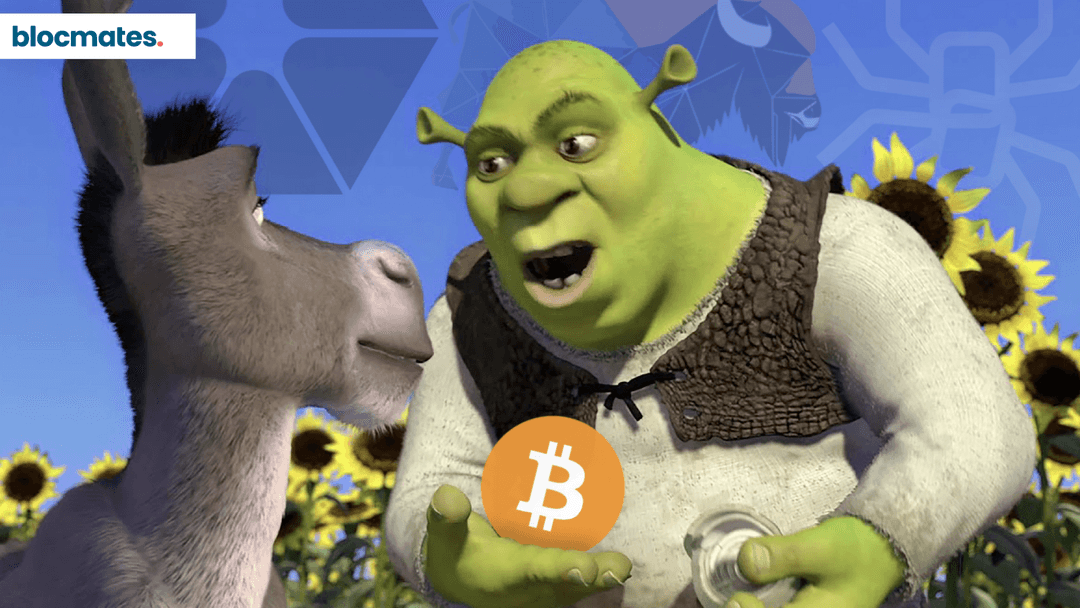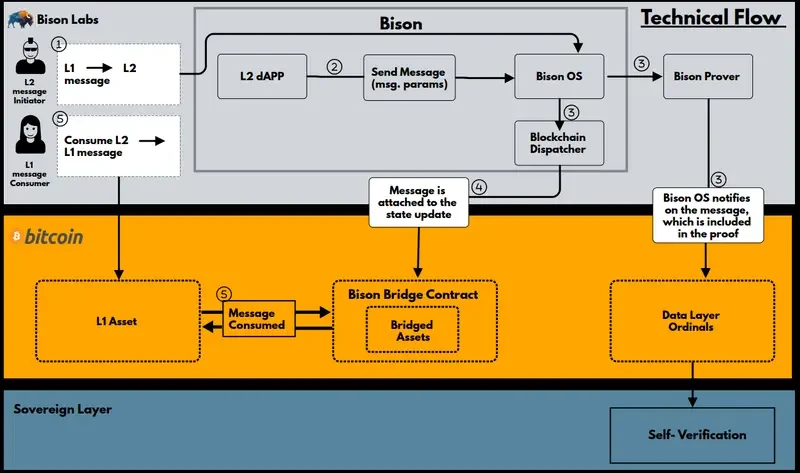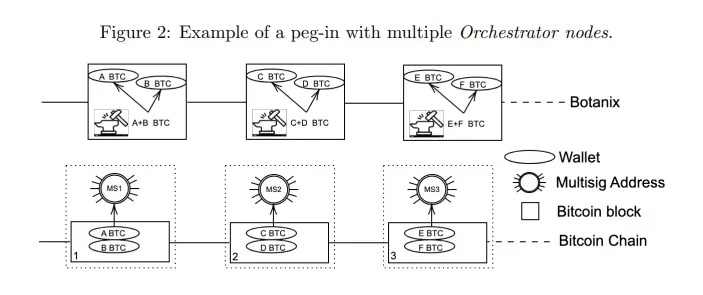Exploring BTC Layer2: Is it a venture capital firm gimmick? Or is it the forefront of financial development?
Original author: Duncan
Original translation: TechFlow
While Rune is stealing the show, Bitcoin developers are hard at work introducing a Frankenstein-like monster on top of the world’s most trusted blockchain. Because Bitcoin can take so many different forms, you might think of Bitcoin’s second layer as more of a venture capital gimmick than a cutting-edge development in finance.

But, dear reader, please note that Bitcoin is much more than people think.
Example? Okay. Bitcoin is like an onion with many layers.
In the current case of Bitcoin, there is L2, an emerging narrative that promises to bring Bitcoin into decentralized finance, providing people with lucrative returns. But, like an onion, there are different kinds, and how they are prepared is important. Will the high-end technology attract new users, or just new coin holders?
What is the problem with Layer?
When we think about the second layer in blockchain development, we think about scalability: how do we make Bitcoin faster, better, and more powerful? Bitcoin is a bit slow, and its basic use, besides being a store of value, is peer-to-peer money transfers. When we talk about the second layer, were talking about using Bitcoin in meaningful ways, like in smart contracts, completing transactions in a reasonable amount of time, and doing it cleanly.
This functionality already exists on Ethereum’s second layer, such as Optimism and Arbitrum batch transactions, which roll back these transactions to the main network. Bitcoin’s second layer developers have creatively borrowed these concepts and implemented them with varying degrees of sophistication.
From a macro perspective, the concept is the same: Bitcoin Layer 2 is designed to enable more powerful applications of Bitcoin.
How Developers Are Preparing for Bitcoin’s Second Layer
Think of how you cook an onion. It can enhance the taste of a dish, serve as a key ingredient, or be the centerpiece. For Bitcoin’s second layer, developers are also thinking about how to use Bitcoin. Should they keep it simple, or make a complete custom solution?
It turns out that solutions can vary wildly in technique. Luckily, Ive put together a menu that highlights some of the key dishes I picked out.
Short and sweet: Citrea
In the short and sweet section, I showed Citrea. Other solutions I grouped here include Stacks, Build on Bitcoin (BOB), and SatoshiVM. They focus on the core aspects of the second layer: scalability of block space and the use of smart contracts. Sounds high-end, but not too crazy.

Citrea is a zero-knowledge (ZK) Rollup designed to expand Bitcoins block space. As a Rollup, it inherits Bitcoins security and batches transactions and verifies validity proofs on Bitcoin through BitVM.
Citrea also uses a two-way peg mechanism between Bitcoin and itself, and is compatible with the Ethereum Virtual Machine (EVM) through BitVM, which allows Bitcoin to be processed in smart contracts off-chain (Turing complete).
It is worth noting that Citrea is a Rollup, not a sidechain, just like garlic and onions are from the same family but completely different. Its goal is to expand block space rather than transaction throughput – that is, it focuses on storing blockchain information more efficiently rather than the number of transactions processed on the second layer.
In the case of Citrea, validity proofs are engraved into Bitcoin, allowing batches of transactions to be easily rolled up. An important difference is that these inscriptions are optimistically verified, all transactions are valid unless proven otherwise, and fraud protection is used to combat illegitimate transactions.
So, where does ZK fit in? Well, first of all, transaction data is not published directly to Bitcoin itself, but only inscribed on it. This allows for some privacy protection for users on Citrea and other second Bitcoin layers that use a similar paradigm.
Secondly, there is a trust-minimized bridge between Citrea and Bitcoin that enables a two-way peg to Bitcoin, where funds can only be withdrawn if a valid ZK proof is passed. Citrea uses ZK-STARK, or Zero-Knowledge Succinct Non-interactive Arguments of Knowledge, to recursively verify batch proofs in a lightweight client.
This sounds a lot like onion flavor is controlled by thiosulfinates – which sounds like nonsense to the average user. There are a lot of important technical details, but in practice, the appeal of this solution is its simplicity.
If we think of Citrea as just another Rollup, like zkSync, Arbitrum, or Optimism, it makes all the fancy-sounding ingredients a little easier to digest. Of course, it’s not exactly the same, especially on a technical level; instead, this is just a loose analogy, used for comparison. Imagine that when you use it on Ethereum, you’re not handing over your Bitcoin to a third party, but using native Bitcoin on Citrea: you just trust the open source code. That’s a powerful attraction.
Tailor-made for you: Bison

When it comes to using Bitcoin natively, some teams have taken different approaches. In fact, there are quite a few solutions that rely on using the EVM to implement their form of DeFi. Bison Labs addresses this problem through its Bison product suite, which includes Bison Network, Bison OS, and Bison Prover.
Bison offers its own analogy: Bison is to Bitcoin what Starknet is to Ethereum. Just like Citrea (and some other solutions), Bitcoin network inscriptions are leveraged as a data availability layer, thus enforcing immutability and allowing data to be more easily obtained from the chain. They also use a Zero-Knowledge Scalable Transparent Theory of Knowledge (or ZK-STARK for short) approach to Rollup.
Bison Network has built-in components for Rollup and smart contract functionality. These components include L2 Dapp logic, sorter and token contracts, and bridge contracts. Essentially, we can think of Bison as an advanced form of native Bitcoin DeFi instead of relying on the EVM to handle this work.
From a culinary perspective, Bison recommends adding raw onions to dishes instead of sautéing them in olive oil every time, “because it tastes better that way.”
Theres a spider in your dish: Botanix
Other teams have taken completely different approaches to leveraging native Bitcoin. If you’re looking for something new and exciting, a good option is Botanix, which proposes to implement proof of stake on its own second layer. Yes, this is new.
Proof of Stake (PoS) on Bitcoin differs from other PoS networks, which distribute interest to holders through inflation, block rewards, or both.
In Botanix, holders lock up their Bitcoin and generate fees through base transaction fees, priority transaction fees, and down fees that occur when a user wants to bridge from Botanix to Bitcoin. In theory, the base reward for Botanix blocks is 0. This means that Botanix greatly benefits from higher user adoption.

Botanix protects locked Bitcoins in an architectural model called “the Spiderchain.”
Spiderchain is “a series of sequential multisigs between Botanix Orchestrators”, which are essentially “full nodes” of the Botanix protocol. On every Bitcoin block, a new multisig is created between randomly selected valid Orchestrators.
Orchestrators cannot access the Bitcoin in the multi-signature without obtaining a majority of signatures in the random multi-signature, which is determined by the number of Bitcoins staked by the Orchestrators themselves, that is, they must control 1/3 of the staked Bitcoins. This security model means that as the network becomes more decentralized, as more Orchestrators join, the network becomes more secure.

Now, it is important to note that Bitcoin natively exists on Spiderchain. All Bitcoin stored on the Botanix EVM portion is synthetic. If user Alice bridges from Bitcoin to Botanix, her Bitcoin will be locked on Spiderchain, and she will receive synthetic Bitcoin to use on the Botanix EVM.
When she wants to bridge back from Bitcoin, the synthetic Bitcoin will be destroyed and she will receive her Bitcoin back from the Spiderchain. This is called a “peg-in” and a “peg-out” respectively, as the supply should remain in a 1:1 ratio.
Botanix is definitely unique – is it like eating spiders? I dont know. It could be gross, or it could be the most delicious dish Ive ever tasted. What I do know is that its definitely cooked with onions.
Where do they overlap?
At this point, you might be thinking: is this another onion reference? The answer is yes, there are onion analogies all over this post.

Similarly, there are some key components that exist in multiple Bitcoin second layer solutions. The main commonalities will be the use of BitVM and the use of Inscriptions as a data availability layer.
Technically, BitVM is what allows fraud proofs to be enabled on Bitcoin. Computations through BitVM are simply verified, similar to optimistic Rollups, but contain elements that are usually part of zero-knowledge Rollups, such as obfuscating transaction details and using trust-minimized bridges.
You’ll also notice that most second layer solutions leverage EVM compatibility to leverage the power of smart contracts and the existing developer pool on Ethereum.
You may see some distinctions, such as whether the solution uses a token or not. For example, Merlin Chain, Map Protocol, and SatoshiVM all have their own tokens. They are not necessarily used as Gas and have different applications.
So, does it really matter?
Well, it depends on what kind of cooking youre doing, right? Raw onions, sautéed onions, fried onions… you know what I mean. At the heart of all this talk about the second layer is the technology, and yes, it does matter if youre cooking, or even eating something thats been cooked. But for the average user, maybe not really that important.
What does this mean for your portfolio? Well, it probably comes down to user experience. If Citrea is clunky to use, people probably won’t use it, even though I think it’s simple and straightforward. Bison and Botanix might look overwhelming, but could be revolutionary user experiences in practice.
But even user experience is a different science. It’s again a question of whether people prefer their onions raw, sautéed, fried or grilled: the market will develop where the demand is.
Ultimately, Bitcoin Layer 2 represents an attempt at wider user adoption, and products will go where the market demand is. If people like cooking onions with spiders, who am I to judge?

OK, admittedly, thats enough onion analogies in this article. Let me summarize it for you, without the onion.
Complex technologies are simplified over time, which leads to better understanding (and therefore better experience) by users, and sometimes you need a more complex solution. Adoption of any kind is usually good for your portfolio.
Technology is great when your portfolio appreciates: adoption means that technology continues to improve, leading to new, potentially complex solutions. Typically, where there is greater attention in cryptocurrencies, there is more development support. In other words, your portfolio is more likely to succeed.
But were talking about Bitcoin. People assume that these portfolios will be successful. Were interested in whether the technology will be adopted. In the second layer environment, we can see Bitcoin being used as money in different environments.
However, we should ask ourselves: Is the idea of Bitcoin as a store of value or market hedge too ingrained to allow this to be seriously considered?
Initially, I think this will attract holders who just want to increase their Bitcoin holdings. The question is always who will be the first to make that move, and for those who succeed, their risk will be well rewarded. For most, it will continue to firmly maintain its current function: as a store of value and a hedge against risk.
Again, see the need, fill the need, and if the market needs onions cooked a certain way, in certain dishes, they will be there. Whether they are eaten regularly is another matter.
Summarize
Personally, Im interested in native solutions like Bison. I think theres market fit for solutions like Botanix, and I think the perfect intersection between the two is probably somewhere.
I think there is enough market interest to justify its development, certainly, but I think it will be a small fraction of Bitcoin’s total market cap. After all, I think its strength is that the second layer of Bitcoin is interconnected with Bitcoin in potential relationship, although it is more interesting in relation to Ethereum.
But, and this is the real key, while Bitcoin’s second layer is still in its incubation stage, it is working hard to become a truly independent ecosystem. In the meantime, we should continue to watch and see how these projects develop and how they bring value to cryptocurrency and blockchain.
This article is sourced from the internet: Exploring BTC Layer2: Is it a venture capital firm gimmick? Or is it the forefront of financial development?
Related: Chainlink (LINK) Price Threatened by This Bearish Signal – Will Holders Step In?
In Brief Chainlink price is observing a death cross on the 4-hour timeframe for the first time since January end. The MVRV ratio shows that LINK is in the opportunity zone and could induce accumulation. Most of the active addresses are comprised of investors witnessing profits or breaking even, providing support to consolidation. The Chainlink (LINK) price is in a downtrend, but the trend is rather weak at the moment. This has allowed investors to put a stop to the ongoing decline. On the other hand, the altcoin is witnessing certain bearish developments that could wipe out a chunk of the recent gains. Chainlink Price Is Finding Support Among Holders Chainlink’s price over the last four days has corrected by more than 14% to trade at $18.56. Despite this, the…





